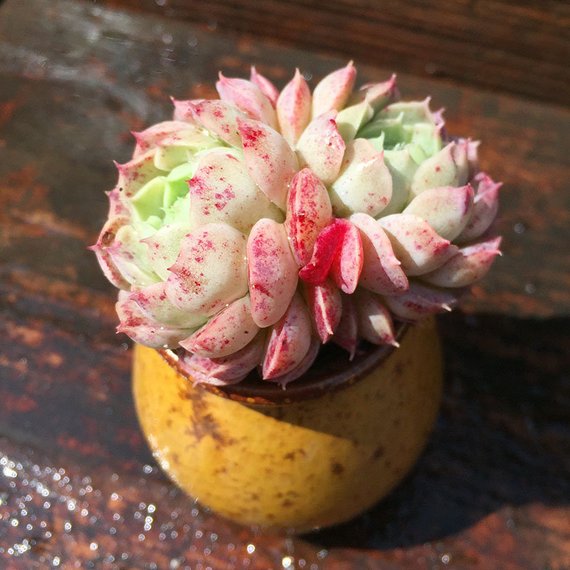Echeveria 'Red hole' belong to the Crassulaceae family, genus Sedum, and are succulent plants.
Growing Environment:
Echeveria 'Red hole' prefer environments with abundant sunlight. However, it is important to note that shading and cooling should be considered when the temperature exceeds 35 degrees Celsius. If exposed to intense sunlight for too long, Echeveria 'Red hole' are prone to sunburn. It is essential to maintain a well-ventilated environment and water the plant only when the potting soil has dried out. Frequent watering can cause the plant to elongate. Additionally, when the temperature drops below 0 degrees Celsius, watering should be suspended to prevent the plant from freezing.
Sunlight:
Echeveria 'Red hole' require ample sunlight for growth and are best placed in environments with abundant sunlight. However, shading should be provided in summer to avoid exposure to intense sunlight.
Repotting:
The growth rate of Echeveria 'Red hole' is moderate. Generally, after 1-5 years of proper care, the plant will grow significantly larger. During this time, repotting can be done in autumn and spring to provide more growing space for the roots and replenish nutrients in the soil for better growth.
When choosing pots for planting, opt for breathable and permeable ones such as clay pots or plastic pots with drainage holes at the bottom. The soil mixture can consist of peat soil, coarse sand, and vermiculite. When repotting, mist the soil and use moist soil. Remember to add a layer of gravel at the bottom of the pot during repotting to enhance soil drainage and aeration.
Watering:
To water Echeveria 'Red hole', insert a bamboo stick into the potting soil, and water only when the stick is completely dry. When watering, try to avoid splashing water droplets onto the leaves of the plant. In summer, it is best to water in the cool morning or evening, while in winter, water during sunny midday hours.
Soil Mix:
The soil should be suitable for Echeveria 'Red hole', ensuring good ventilation, looseness, and drainage. A mixture of wood ash, river sand, and granular soil can be used. Additionally, adding a layer of small gravel to the bottom of the pot during repotting can enhance soil permeability and facilitate plant growth.
Fertilization:
Echeveria 'Red hole' have certain nutrient requirements for growth. It is recommended to use thin and frequent fertilization. In spring and autumn, fertilize every 20 days with diluted liquid fertilizer to ensure the plant's growth needs are met. Fertilization should be suspended during summer and winter to prevent fertilizer damage.
